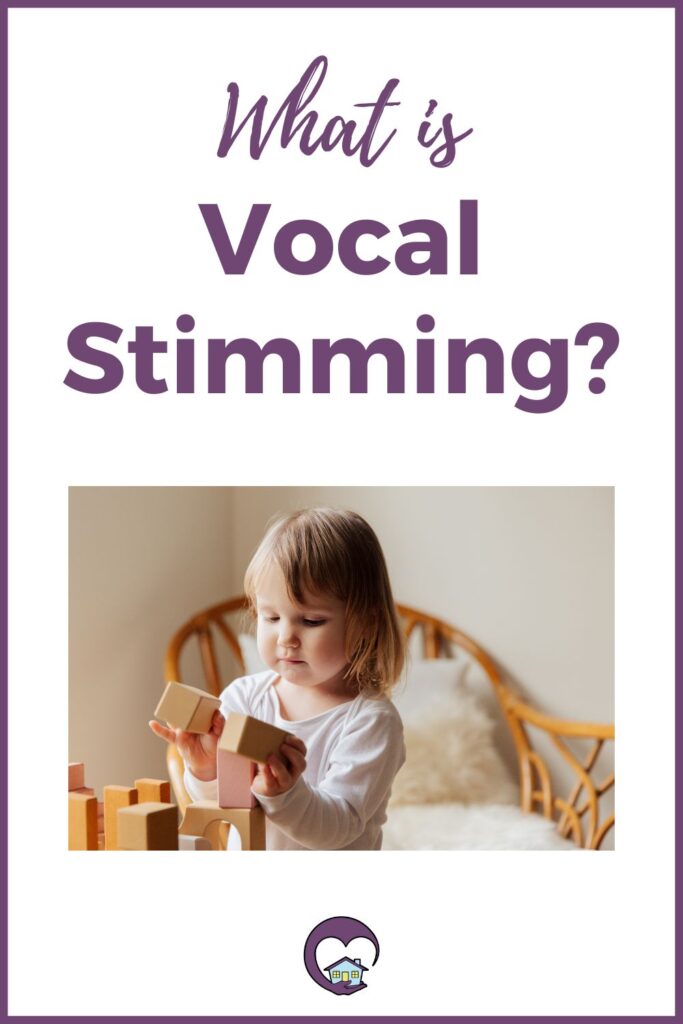Do you have an autistic child who won’t stop humming? This is known as vocal stimming.

All about vocal stimming
Vocal stimming is any autism stim involving the vocal cords. It may be babbling, echolalia, singing, humming or simply talking.
Affects of vocal stims
Vocal stimming is not harmful by default, but can be depending on how long the person stims. For example, if your autistic child talks or sings all day, they’re likely to be hoarse or lose their voice completely the next day.
People around vocal stimmers may be annoyed and find the stimming aggravating. Noise-cancelling headphones is one option. Giving the autistic child a space away from people to stim is another option.
How to stop vocal stimming
Self-regulatory behavior should never be punished in favor of accommodating a non-autistic person.
Teach boundaries
However, boundaries should be taught to your autistic child so they can learn that they need to be aware of their surroundings. Boundaries also teach empathy. If your child wants their sibling to stop singing Let It Go for the millionth time, use that as an anecdote to explain why their vocal stimming cannot always be performed.
Sometimes, stims get out of hand and we don’t know when we’re overdoing it. While it is not our responsibility to be more of a convenience to somebody else, it is our responsibility to be respectful of other people.
Use characters or examples
In this case, you need to use anecdotes to form a personal connection with them, so that they can understand you. Reference characters and scenes from their favorite movies or use personal examples that they have been involved in with other people.
Autistic people need personal anecdotes in order to connect with people because we don’t understand the context or similarity otherwise. If you are not autistic, you might think that it’s rude to talk about yourself so much when you are trying to focus on somebody else. Autistic culture does not work like this, because our brains look for similarities and patterns in everything.
In this case, you are not being rude. You are connecting and communicating with your child, and that is the most important thing.
Instead of saying “I” or “we” to describe the boundaries and why your child needs to be respectful of their sibling, use the characters. “I” and “we” feels manipulative and dismissive. If you are autistic child starts to feel misunderstood, not heard, or invalidated, they will either melt down or shut down.
Validate your child
In order to feel safe during difficult situations, your autistic child needs to feel emotionally validated.
Find the similarities in situations your child has witnessed to use as examples.
“Remember when you were playing at the park with your yellow monster truck, and there was a kid in the sandbox?”
Give your child the opportunity to fill in the story, so they are participating in the discussion. This will also give you a chance to learn more about their personality. If all they do is nod, just keep going; don’t push.
“The kid kept throwing sand everywhere. It got all over your clothes.”
Don’t call out your child by saying, “You felt ____,” because it might upset your child if you presume you know how they felt in that moment.
“Do you remember how you felt after that?”
Let them nod or describe it. Then say that that is how their sibling feels.
In order to understand the situation at hand, we need contextual information. We need something to compare it to. Your autistic child isn’t going to understand that their sibling is frustrated and upset, but they are going to understand how their sibling feels if you give a proper example.
This is perhaps why authentic people love their screen time — it gives us the opportunity to compare fake situations real life ones.
Aim to give your child a safe space to stim, whatever their stims are, away from people who are easily over stimulated. When autistic people start overdoing stims, it’s often because they haven’t been able to properly self-regulate.
A question to consider with vocal stimming is if the child is engaging in scripting, a type of autism masking. Click here to read more about autistic scripting.
Does your child use vocal stims? How do you handle it? Share in the comments below.

Leave a Reply